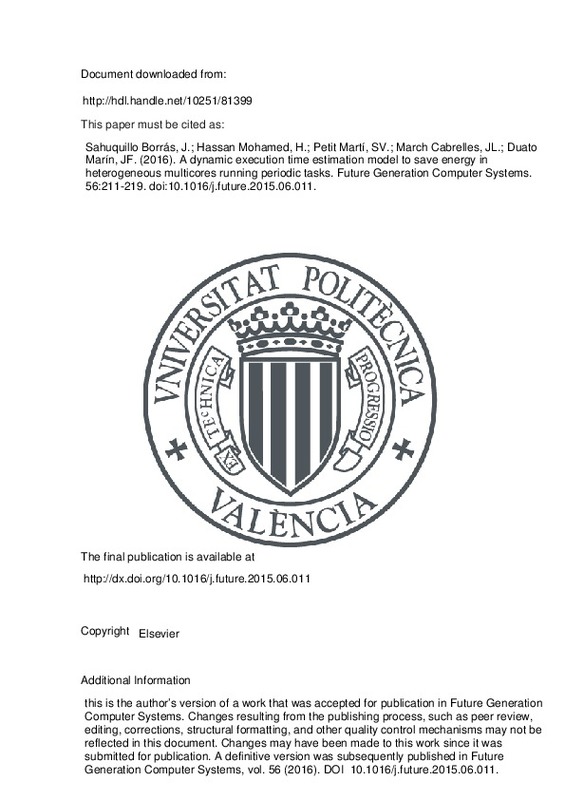JavaScript is disabled for your browser. Some features of this site may not work without it.
Buscar en RiuNet
Listar
Mi cuenta
Estadísticas
Ayuda RiuNet
Admin. UPV
A dynamic execution time estimation model to save energy in heterogeneous multicores running periodic tasks
Mostrar el registro completo del ítem
Sahuquillo Borrás, J.; Hassan Mohamed, H.; Petit Martí, SV.; March Cabrelles, JL.; Duato Marín, JF. (2016). A dynamic execution time estimation model to save energy in heterogeneous multicores running periodic tasks. Future Generation Computer Systems. 56:211-219. https://doi.org/10.1016/j.future.2015.06.011
Por favor, use este identificador para citar o enlazar este ítem: http://hdl.handle.net/10251/81399
Ficheros en el ítem
Metadatos del ítem
| Título: | A dynamic execution time estimation model to save energy in heterogeneous multicores running periodic tasks | |
| Autor: | March Cabrelles, José Luis Duato Marín, José Francisco | |
| Entidad UPV: |
|
|
| Fecha difusión: |
|
|
| Resumen: |
Nowadays, real-time embedded applications have to cope with an increasing demand of functionalities,
which require increasing processing capabilities. With this aim real-time systems are being implemented
on top of ...[+]
|
|
| Palabras clave: |
|
|
| Derechos de uso: | Reserva de todos los derechos | |
| Fuente: |
|
|
| DOI: |
|
|
| Editorial: |
|
|
| Versión del editor: | http://dx.doi.org/10.1016/j.future.2015.06.011 | |
| Código del Proyecto: |
|
|
| Descripción: |
|
|
| Agradecimientos: |
|
|
| Tipo: |
|







![[Cerrado]](/themes/UPV/images/candado.png)


